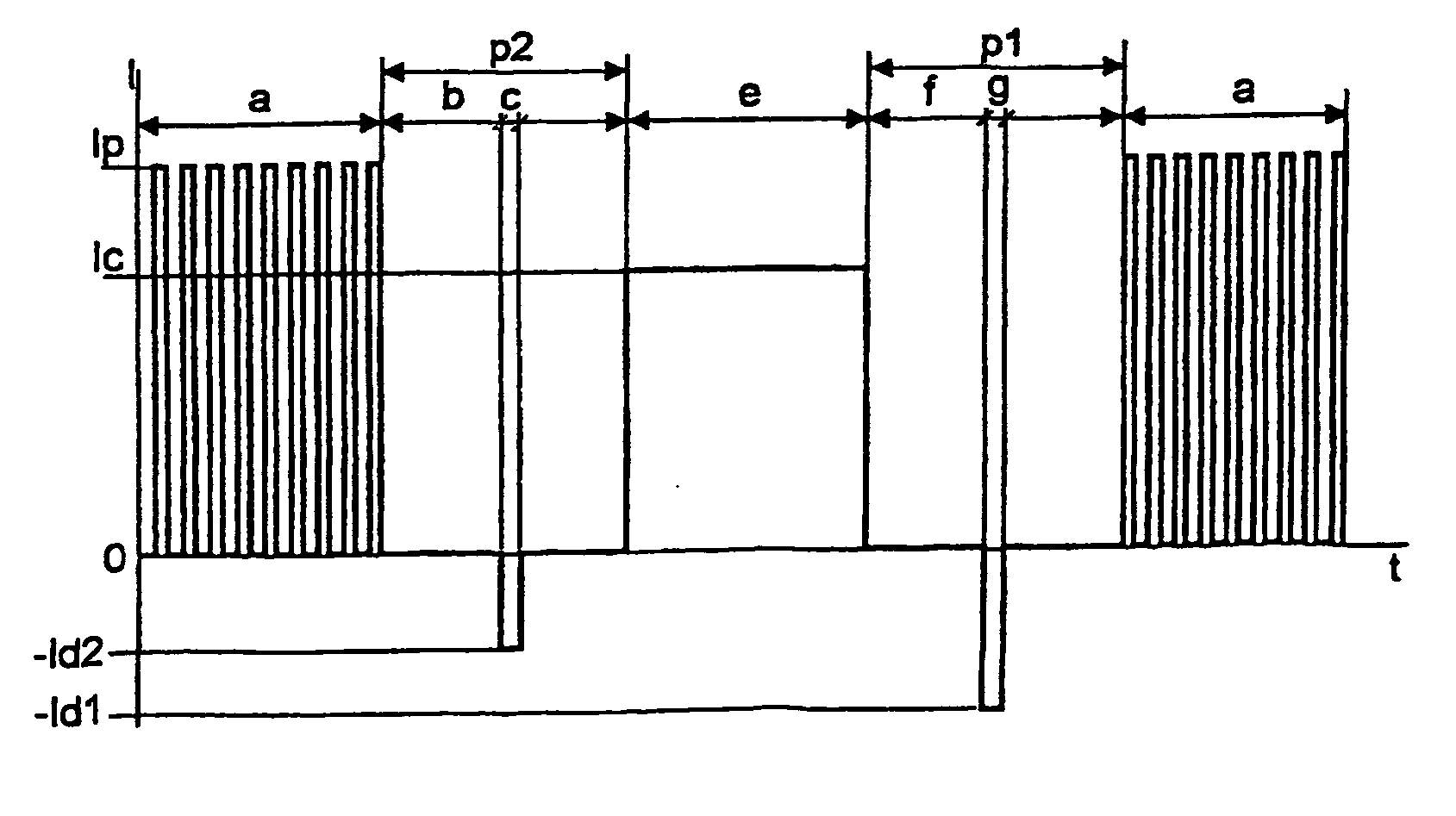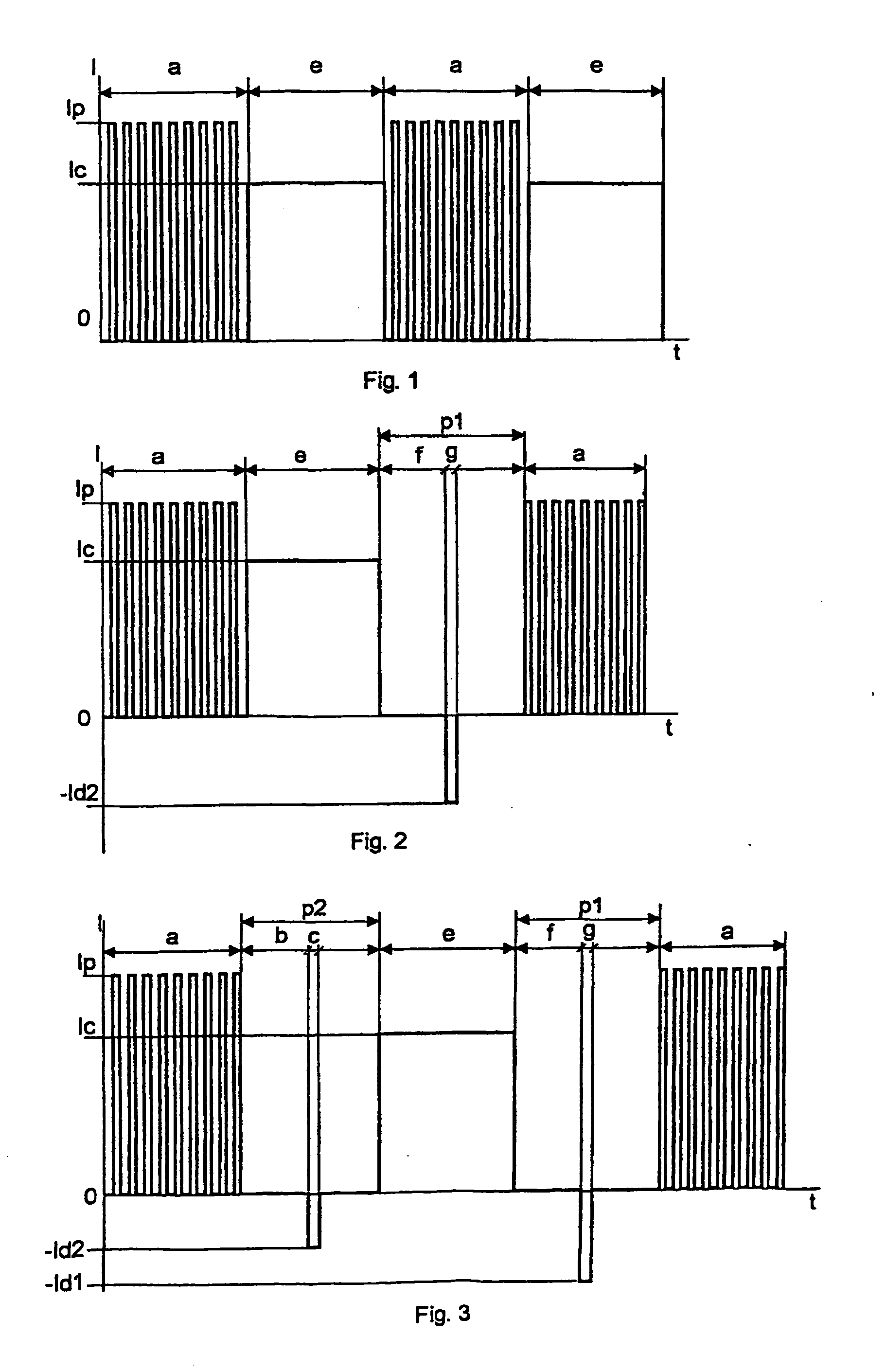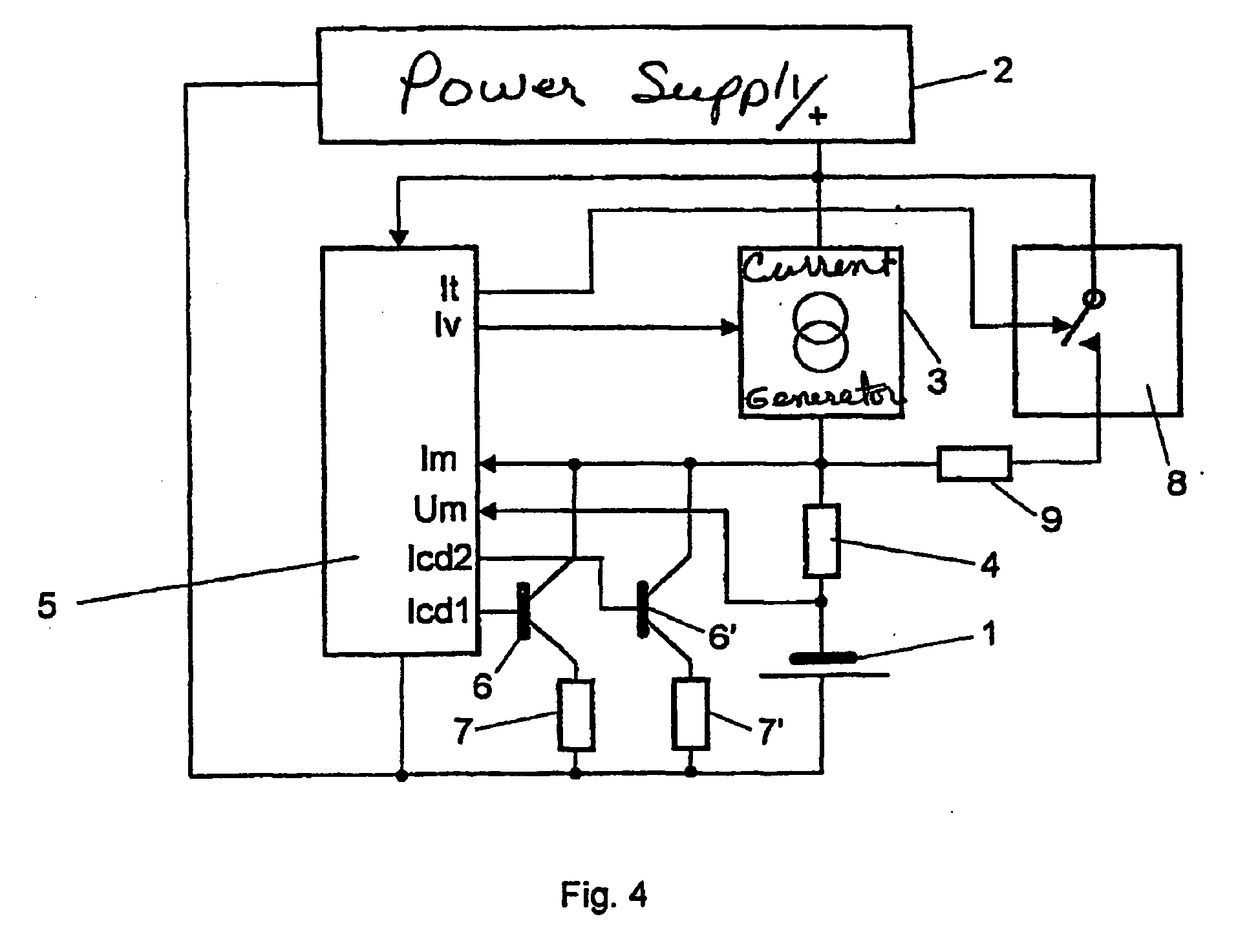Battery current charger
a battery charger and current technology, applied in the direction of secondary cell charging/discharging, electric vehicles, electrical apparatus, etc., can solve the problems of limited charging time reduction, achieve the effect of reducing charging time, increasing the rate of chemical transformation, and reducing charging tim
- Summary
- Abstract
- Description
- Claims
- Application Information
AI Technical Summary
Benefits of technology
Problems solved by technology
Method used
Image
Examples
Embodiment Construction
[0030]The first and simplest possible preferred method according to the invention can be followed in FIG. 1. On the horizontal axis of the graph the time t, on the vertical axis the current I applied to the terminals of the rechargeable battery are drawn up. The charging current is supplied by an electric power supply applied through a charging circuit to the terminals of the battery to be charged, which power supply can be a rectifier connected to the AC power line voltage, but any battery with higher voltage or similar may be used as well. With this embodiment there are different charging intervals inserted into the charging current, namely interval a, which is a pulsed charging interval, followed by an interval e, which is a charging interval with continuous charging current.
[0031]The interval a is a charging interval consisting of charging current pulses. The frequency of the pulse series is essentially identical with the internal resonance frequency of the rechargeable battery....
PUM
| Property | Measurement | Unit |
|---|---|---|
| frequency | aaaaa | aaaaa |
| frequency | aaaaa | aaaaa |
| resonance frequencies | aaaaa | aaaaa |
Abstract
Description
Claims
Application Information
 Login to View More
Login to View More - R&D
- Intellectual Property
- Life Sciences
- Materials
- Tech Scout
- Unparalleled Data Quality
- Higher Quality Content
- 60% Fewer Hallucinations
Browse by: Latest US Patents, China's latest patents, Technical Efficacy Thesaurus, Application Domain, Technology Topic, Popular Technical Reports.
© 2025 PatSnap. All rights reserved.Legal|Privacy policy|Modern Slavery Act Transparency Statement|Sitemap|About US| Contact US: help@patsnap.com



